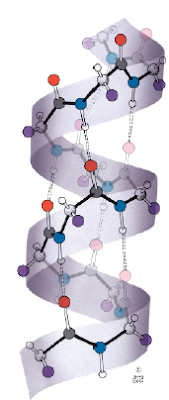Secondary Structure Prediction

It allows us to find where secondary structural elements ( α helices, β sheets, loops) are located. Secondary Structure Predictors Chou-Fasman COMBINE GORIII PRISM PHD0 PHD3 PSIPred PSIPred uses most recent algorithm that can predict secondary structure of about 80% accuracy. Protein Threading or Protein Fold Recognition Although proteins are of large no, tertiary structural motifs are limited to which most protein belongs. It is speculated that about 1000 distinct protein folding patterns may be present in total. Surprisingly, a few dozen folding patterns account for about half of all known protein structures . This helps to use previously solved structures as starting point. To identify the fold the sequence is compared with all 500+ folds in library of known protein structure . If pair-wise alignment shows less than or nearly 30% identity then it is ideal to be used for protein fold recognitions. When successful, structure from fold recognition may be about 3-6Å RMSD (root mean...





